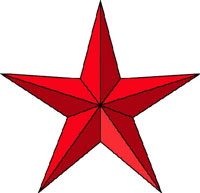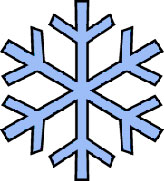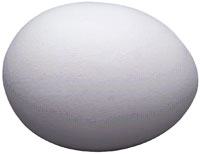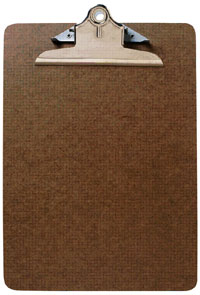Snowflakes: Symmetry
Snowflakes provide wonderful examples of symmetry. It is useful to engage students in examining symmetry.
There are two basic types of symmetry:
- Rotational symmetry (also known as Radial symmetry)
- Reflection symmetry (also known as Bilateral, or Mirror symmetry)
In rotational symmetry, you can cut the image in half in more than one direction, and the two halves will appear as mirror images of each other. The object has more than one line of symmetry. For example, a triangle can be cut along three different axes. A circle can be cut along an infinite number of axes.
Check Your Thinking: The two images below are examples of rotational symmetry. How many lines of symmetry are possible in each?
In reflection symmetry, you can cut the image in half in only one plane. In other words, there is only one direction in which you can draw a line that will result in two halves that are mirror images of each other. There is only one line of symmetry. For example, for the two pictures below, there is only one way you can fold each one that will result in the two halves being equal.
Check Your Thinking: The two photos below are examples of reflection symmetry. Can you identify the line of symmetry in each?
Download the Snowflake Shapes & Activities document (pdf) for a variety of activities you can do with your students related to snowflake shapes and symmetry. Activities referenced in the document are also listed under the Extension Activities section of this module, and online activities and resources referenced in the document are also listed under the Resources section.
Optional: For more detailed scientific information about snowflakes, view or download The physics of snow crystals (pdf) article by Dr. Kenneth G. Libbrecht.



